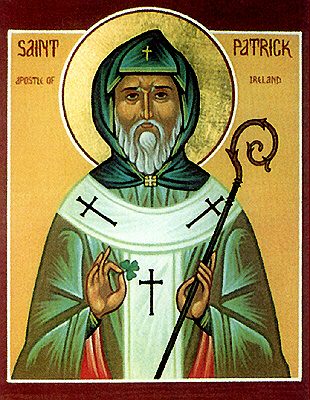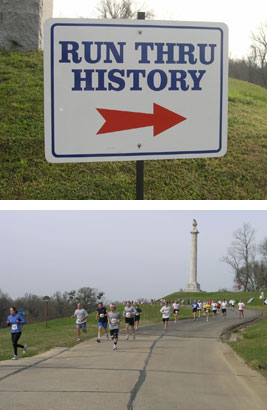Don't Know Much About St Patrick's Day ... Now You Do!

In the spirit of the holiday, National Geographic News rustled up other facts related to St. Patrick's Day festivities. Take heart—we skipped the blarney.
• St. Patrick's Day marks the Roman Catholic feast day for Ireland's patron saint, who died in the 5th century. St. Patrick (Patricius in Latin) was not born in Ireland, but in Britain.
• Irish brigands kidnapped St. Patrick at 16 and brought him to Ireland. He was sold as a slave in the county of Antrim and served in bondage for six years until he escaped to Gaul, in present-day France. He later returned to his parents' home in Britain, where he had a vision that he would preach to the Irish. After 14 years of study, Patrick returned to Ireland, where he built churches and spread the Christian faith for some 30 years.
• Many myths surround St. Patrick. One of the best known—and most inaccurate—is that Patrick drove all the snakes from Ireland into the Irish Sea, where the serpents drowned. (Some still say that is why the sea is so rough.)
But snakes have never been native to the Emerald Isle. The serpents were likely a metaphor for druidic religions, which steadily disappeared from Ireland in the centuries after St. Patrick planted the seeds of Christianity on the island.
• In the United States, it's customary to wear green on St. Patrick's Day. But in Ireland the color was long considered to be unlucky, says Bridget Haggerty, author of The Traditional Irish Wedding and the Irish Culture and Customs Web site.
As Haggerty explains, Irish folklore holds that green is the favorite color of the Good People (the proper name for faeries). They are likely to steal people, especially children, who wear too much of the color.
• Colonial New York City hosted the first official St. Patrick's Day parade in 1762, when Irish immigrants in the British colonial army marched down city streets. In subsequent years Irish fraternal organizations also held processions to St. Patrick's Cathedral. The various groups merged sometime around 1850 to form a single, grand parade.
• Today New York's St. Patrick's Day parade is the longest running civilian parade in the world. This year nearly three million spectators are expected to watch the spectacle and some 150,000 participants plan to march.
• Dublin's St. Patrick's Day parade is little more than 75 years old. This year festival organizers will launch 15,000 pounds (7 metric tons) of fireworks to cap their celebration, which is expected to draw 400,000 spectators.
*By law, pubs in Ireland were closed on St. Patrick's Day, a national religious holiday, as recently as the 1970s.
• According to the U.S. Census Bureau, 34 million United States residents claim Irish ancestry, or nearly ten times the entire population of Ireland today, which stands at 3.9 million. Among U.S. ethnic groups, the number of Irish-Americans in the U.S. is second only to the number of German-Americans.
• Since 1820, 4.8 million Irish have legally immigrated to the United States, according to the U.S. Census Bureau. The agency reports that only four countries—Germany, Italy, Mexico, and the United Kingdom—have sent more native-born residents to become naturalized U.S. citizens.
• Chicago is famous for dyeing the Chicago River green on St. Patrick's Day. The tradition began in 1962, when a pipe fitters union—with the permission of the mayor—poured a hundred pounds (45 kilograms) of green vegetable dye into the river. (On the job, the workers often use colored dyes to track illegal sewage dumping.) Today only 40 pounds (18 kilograms) of dye are used, enough to turn the river green for several hours.
According to the Friends of the Chicago River, a local environmental group, more people are likely to view the Chicago River on St. Patrick's Day than on any other day.
• Guinness stout, first brewed by Arthur Guinness in Dublin, Ireland, in 1759, has become synonymous with Ireland and Irish bars. According to the company's Web site, 1,883,200,000 (that's 1.9 billion) pints of Guinness are consumed around the world every year.
• Robert Louis Stevenson, the 19th-century Scottish author of Kidnapped, Treasure Island, and other novels, brought a store of Guinness with him during a trip to Samoa in the South Pacific, according to the Guinness Web site.
• Ireland is about 300 miles (480 kilometers) long and 200 miles (320 kilometers) wide. Those facts, along with other features, led Swedish geographer Ulf Erlingsson to recently conclude that the Atlantic Ocean island is the same one identified by ancient Greek philosopher Plato as Atlantis in his famous dialogues Timaeus and Critias.
• According to the U.S. Census Bureau, 34 million United States residents claim Irish ancestry, or nearly ten times the entire population of Ireland today, which stands at 3.9 million. Among U.S. ethnic groups, the number of Irish-Americans in the U.S. is second only to the number of German-Americans.
• Since 1820, 4.8 million Irish have legally immigrated to the United States, according to the U.S. Census Bureau. The agency reports that only four countries—Germany, Italy, Mexico, and the United Kingdom—have sent more native-born residents to become naturalized U.S. citizens.
• Chicago is famous for dyeing the Chicago River green on St. Patrick's Day. The tradition began in 1962, when a pipe fitters union—with the permission of the mayor—poured a hundred pounds (45 kilograms) of green vegetable dye into the river. (On the job, the workers often use colored dyes to track illegal sewage dumping.) Today only 40 pounds (18 kilograms) of dye are used, enough to turn the river green for several hours.
According to the Friends of the Chicago River, a local environmental group, more people are likely to view the Chicago River on St. Patrick's Day than on any other day.
• Guinness stout, first brewed by Arthur Guinness in Dublin, Ireland, in 1759, has become synonymous with Ireland and Irish bars. According to the company's Web site, 1,883,200,000 (that's 1.9 billion) pints of Guinness are consumed around the world every year.
• Robert Louis Stevenson, the 19th-century Scottish author of Kidnapped, Treasure Island, and other novels, brought a store of Guinness with him during a trip to Samoa in the South Pacific, according to the Guinness Web site.
• Ireland is about 300 miles (480 kilometers) long and 200 miles (320 kilometers) wide. Those facts, along with other features, led Swedish geographer Ulf Erlingsson to recently conclude that the Atlantic Ocean island is the same one identified by ancient Greek philosopher Plato as Atlantis in his famous dialogues Timaeus and Critias.


.jpg)






